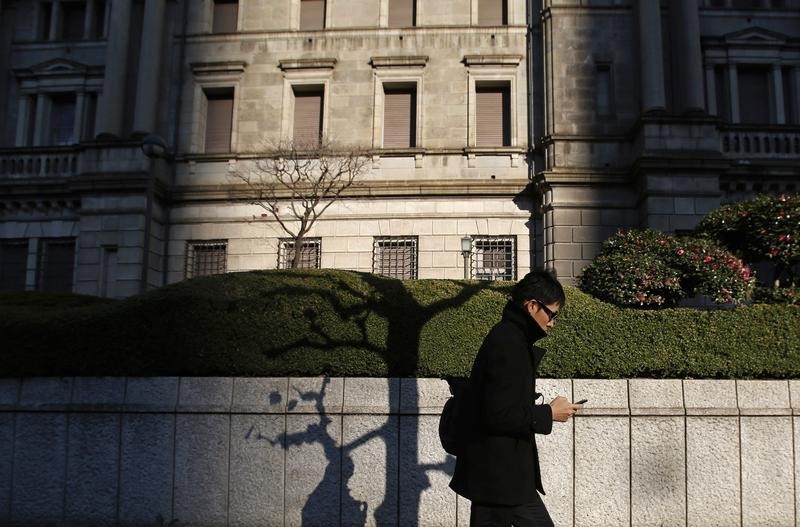By Leika Kihara
TOKYO (Reuters) - The Bank of Japan cut next fiscal year's inflation forecast on Wednesday and expanded a loan scheme aimed at boosting lending, acting to deflect criticism that it is sitting idly as slumping oil prices keep inflation well short of its target.
As widely expected, the BOJ held off on expanding its massive stimulus programme and maintained its pledge to increase base money at an annual pace of 80 trillion yen (447 billion pounds) through buying government bonds and risk assets.
In a review of its long-term estimates, the BOJ cut its core consumer inflation forecast for the year beginning in April to 1.0 percent from 1.7 percent projected three months ago.
But it slightly raised its inflation forecast for fiscal 2016 to 2.2 percent from 2.1 percent, a sign central bankers are publicly sticking to the view Japan will hit an inflation goal of 2 percent.
With many financial market participants saying the revised inflation forecast means the BOJ is essentially pushing back its goal of hitting 2 percent inflation in the coming fiscal year, Governor Haruhiko Kuroda said the bank expects oil and consumer prices to gradually rebound.
"Consumer inflation will slow for the time being due to oil price falls," Kuroda told a news conference after the decision.
"On the assumption that oil prices will flatten out at current levels and rise moderately ahead, the effect of the oil price decline will ease. If so, we expect consumer inflation to reach 2 percent in a period centred on fiscal 2015."
Hideo Kumano, chief economist at Dai-Ichi Life Research Institute, said the BOJ's logic appears different from October, when falling oil prices triggered an easing.
"Still, the BOJ continues to lean toward further easing, so it could act in October at the latest as the (positive) effects of a weak yen run their course," Kumano said.
The BOJ expanded its "quantitative and qualitative easing" (QQE) less than three months ago to prevent oil price falls and a subsequent slowdown in price rises from damping down inflation expectations.
The relentless drop in oil prices, which have nearly halved since October, has kept alive expectations the BOJ will expand QQE again soon. Some investors sold the yen ahead of Wednesday's meeting in a precautionary move against a surprise action.
After the bank stood pat, the yen bounced to a session high against the dollar.
The BOJ's new price forecast is still much higher than the 0.6 percent seen by analysts in a Reuters poll, many of whom expect the bank to ease again as early as April.
The BOJ revised up next fiscal year's economic growth forecast to 2.1 percent from 1.5 percent, suggesting that a pick-up in growth will boost wages and accelerate inflation.
Many BOJ policymakers are increasingly wary of expanding QQE further with the bank's huge purchases already pushing five-year government bond yields into negative territory.
The BOJ instead extended for a year two loan schemes aimed at encouraging banks to lend more, expanding one of them by 3 trillion yen.
The BOJ issues a semi-annual report with forecasts on the economy and prices in April and October of each year. It reviews the projections at rate reviews in January and July.
